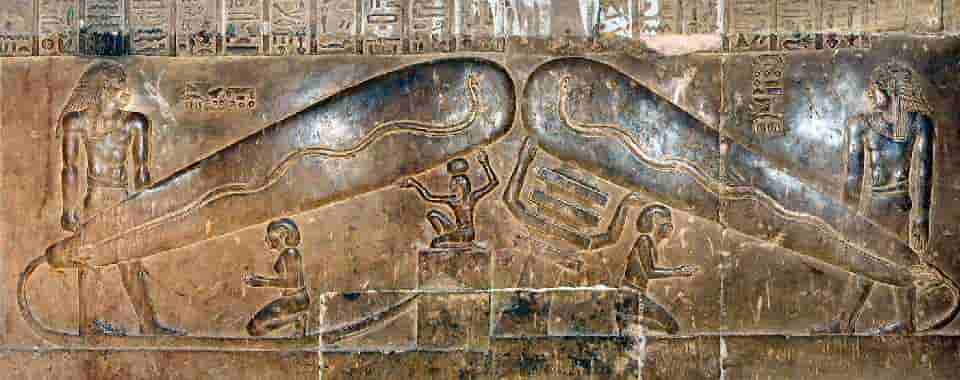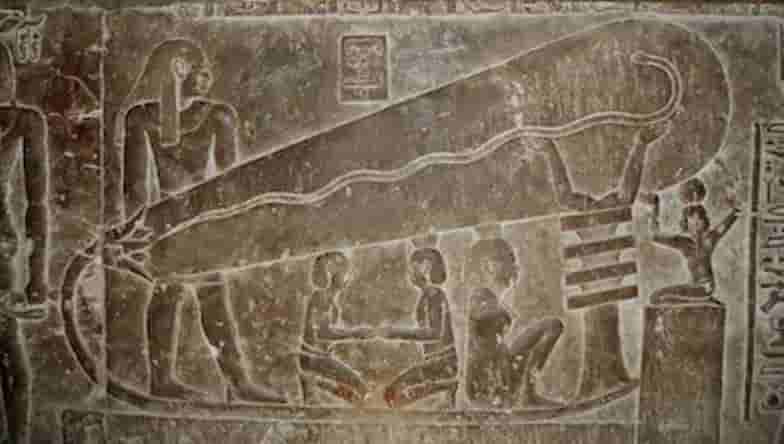The Hathor Temple walls in Dendera have sparked various theories and speculations since their discovery. These walls possess peculiar characteristics that have led to the formulation of diverse hypotheses.
What could be the source of such controversy? Enter the infamous Dendera light, a series of stone reliefs adorning the temple walls, often interpreted as concrete evidence of the use of rudimentary electrical technology in ancient Egypt.
The temple, initiated by Nectanebo I in the 4th century BC and completed during Roman times, boasts a collection of bas-reliefs scattered across its complex.
These bas-reliefs notably feature what Egyptologists identify as a snake emerging from a lotus flower, symbolizing a mythological narrative that illustrates the birth of an ancient Egyptian deity associated with the cobra.
However, certain figures, like the Ufologist Erich von Däniken in his book “The Eyes of the Sphinx,” contend that this image doesn’t solely represent a mythological tale. Instead, it bears resemblance to modern objects such as Crookes tubes, electric arc lamps, and Geissler tubes.
Von Däniken asserts that this interpretation is particularly apparent, given that one of these bas-reliefs is situated in a concealed crypt.
One key pillar of this theory suggests that the light emitted would explain the absence of black carbon deposits in many of the discovered tombs.
As a result, the Dendera light is often likened to the mythical “Baghdad Battery,” comprising three found artifacts: a ceramic pot, a copper tube, and an iron rod, believed by many to function as an electric battery.
However, this theory has faced numerous critics who assert that if such a groundbreaking invention had existed in those times, there would undoubtedly be a clear reference to it within the already extant Library of Alexandria, a repository with numerous copies that attracted the foremost thinkers from across the Hellenic world.
In the 1980s, two researchers, Peter Krassa and Reinhard Habeck, raised objections to a series of hypotheses. Consequently, fresh speculations emerged, positing, among other things, that the ancient Egyptians may have stumbled upon the knowledge that the decomposition of certain organic materials yielded something akin to methane gas.
This line of thinking suggests that they harnessed these discoveries to create a device capable of naturally illuminating corridors without causing harm to their interior decor.
Many passageways in these grand and splendid structures were shrouded in complete darkness. Nevertheless, as time has passed, no remnants or traces of torches or lamps have been unearthed on the ceilings or walls.
It’s important to note that these are conjectures, as the truth remains that no such apparatus has been unearthed, leaving us to rely solely on the intuitions of these researchers.
It appears that, much like many instances in history, the ancient Egyptians continue to be an enigma for contemporary civilizations. In the absence of more compelling evidence, there will always be those who contend that this civilization possessed a depth and complexity beyond our current understanding.







